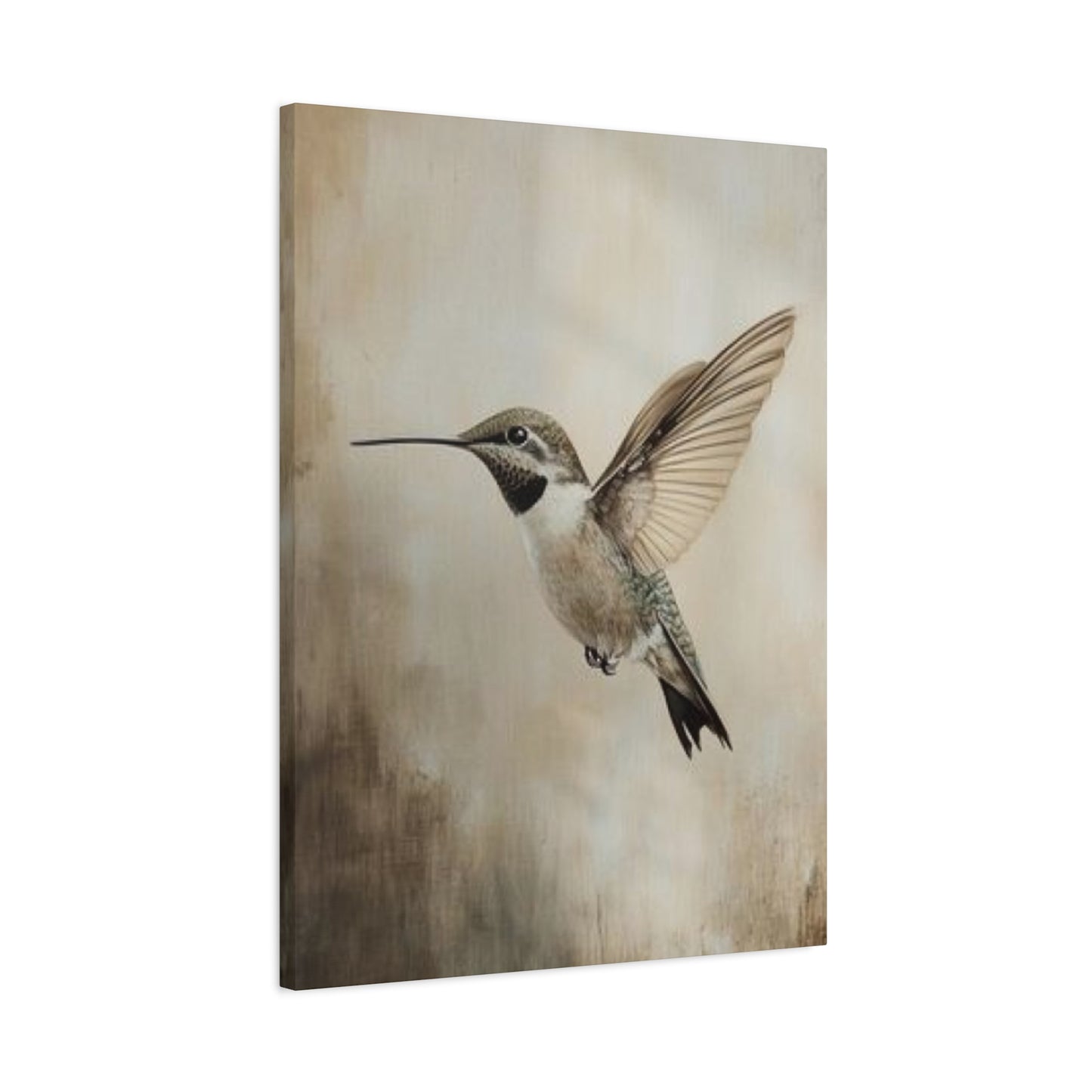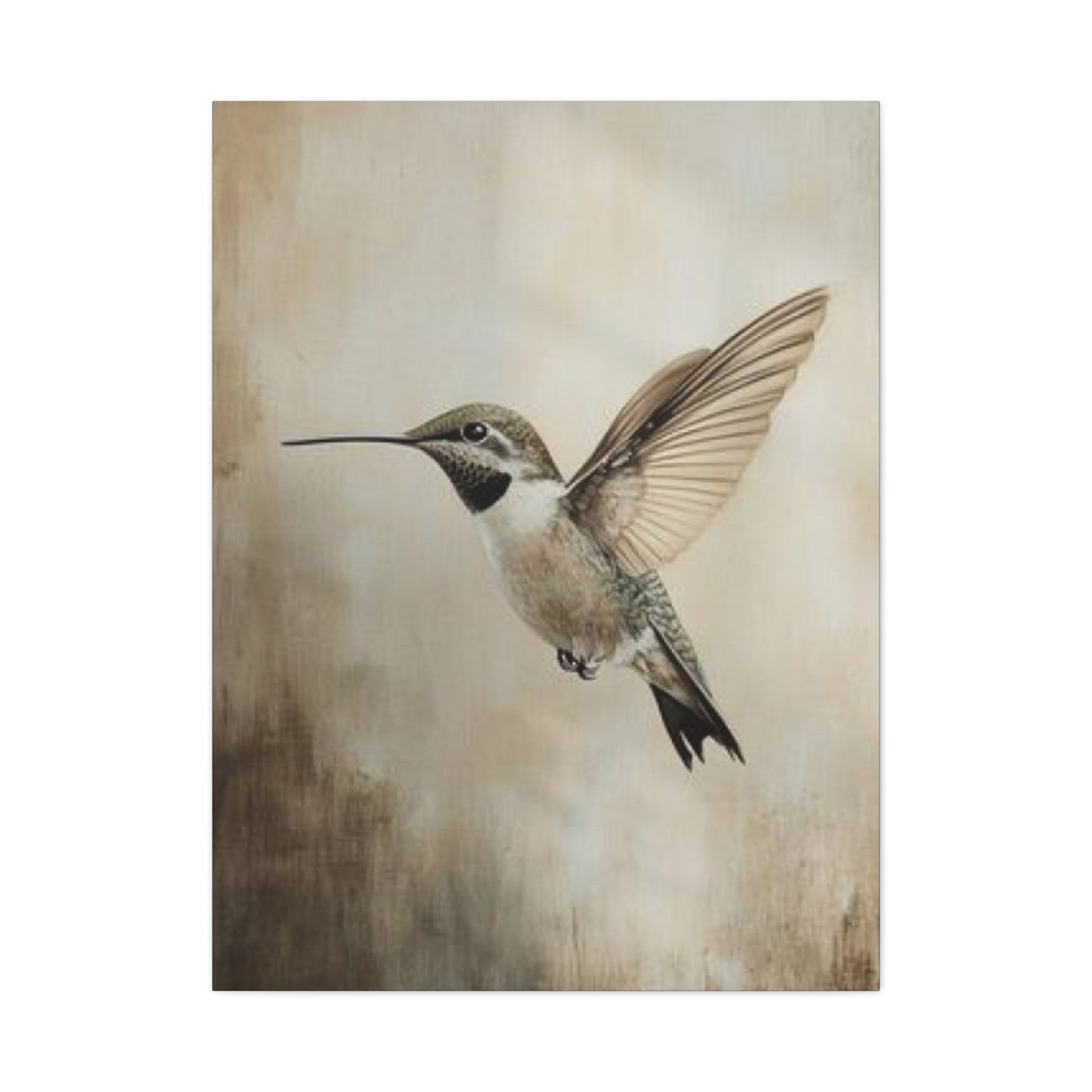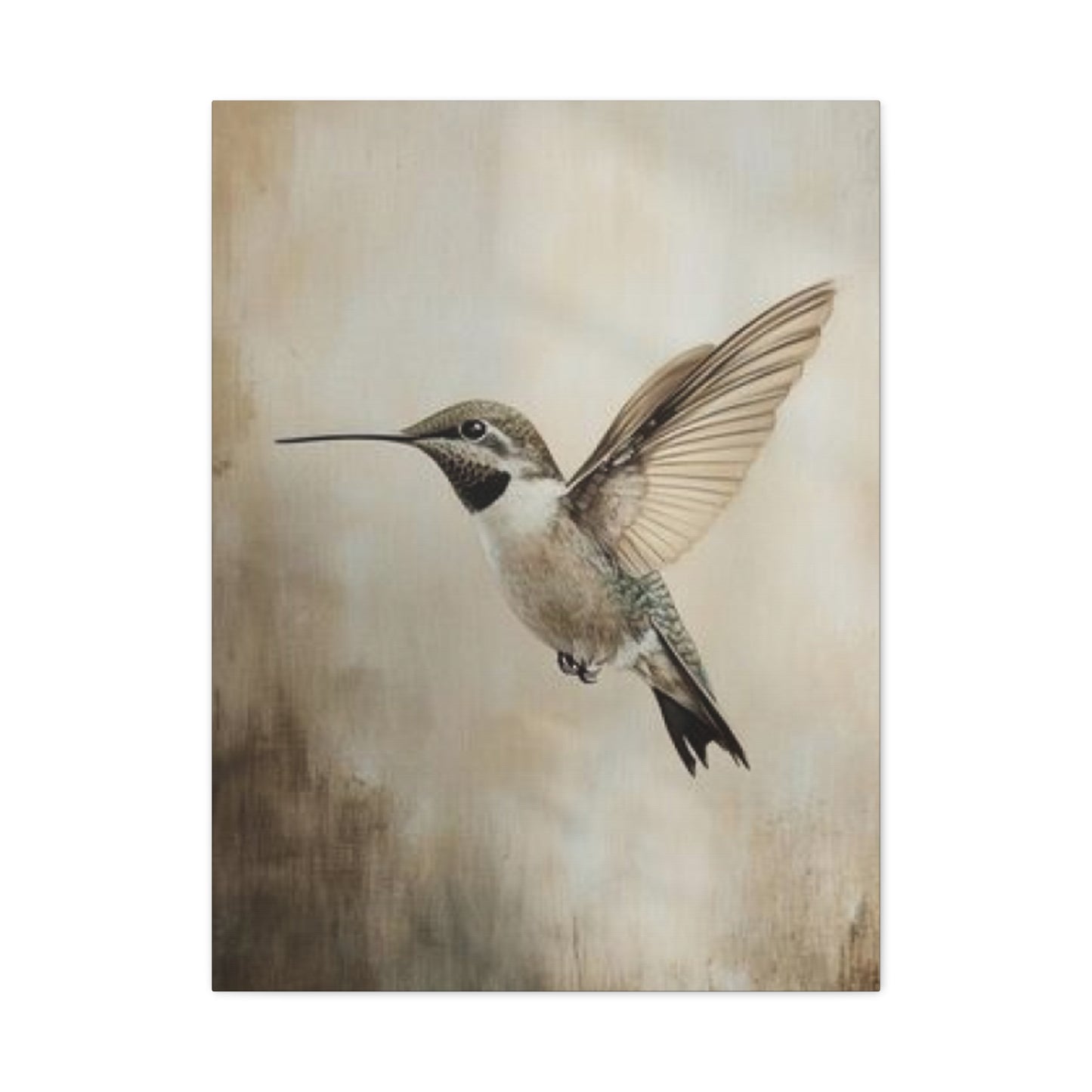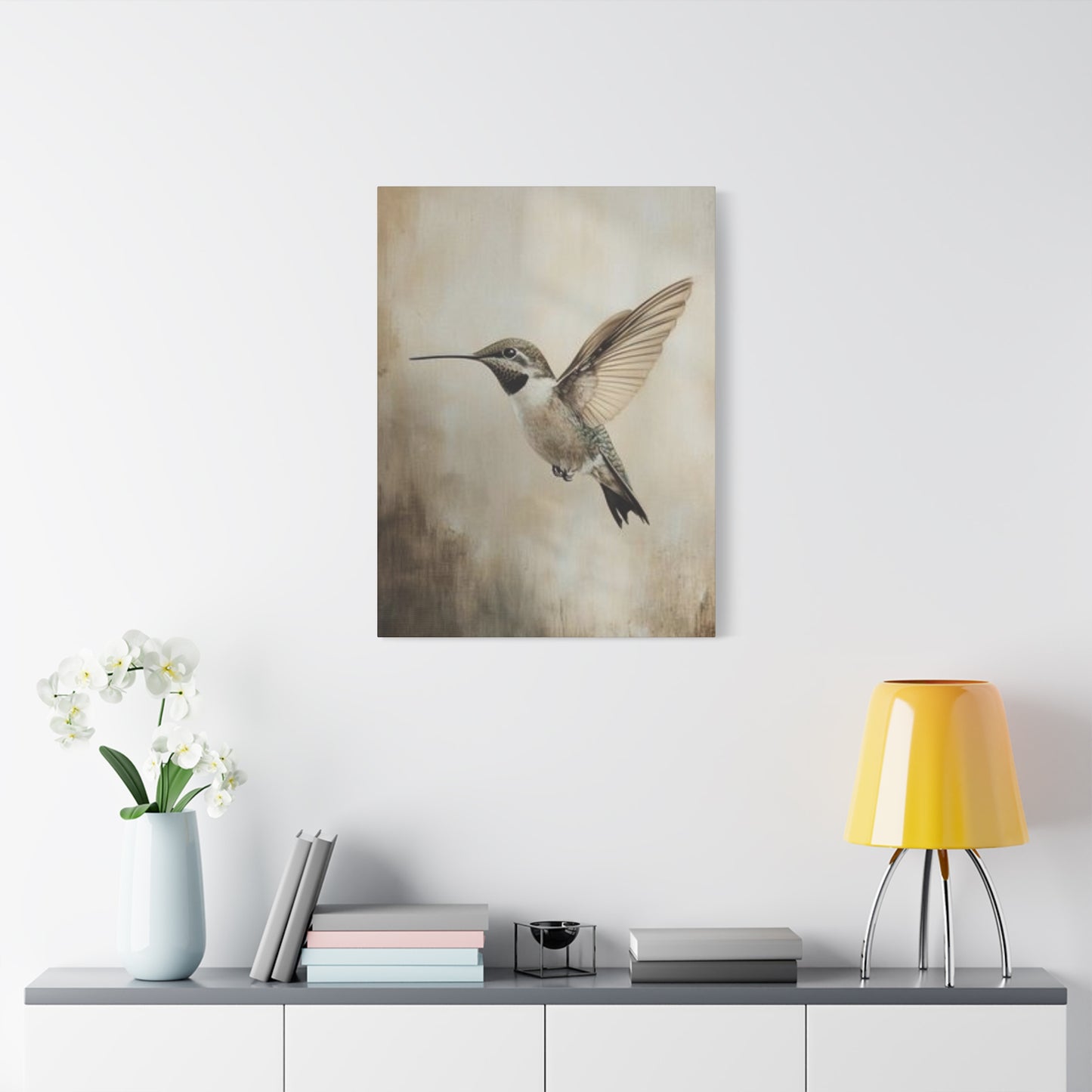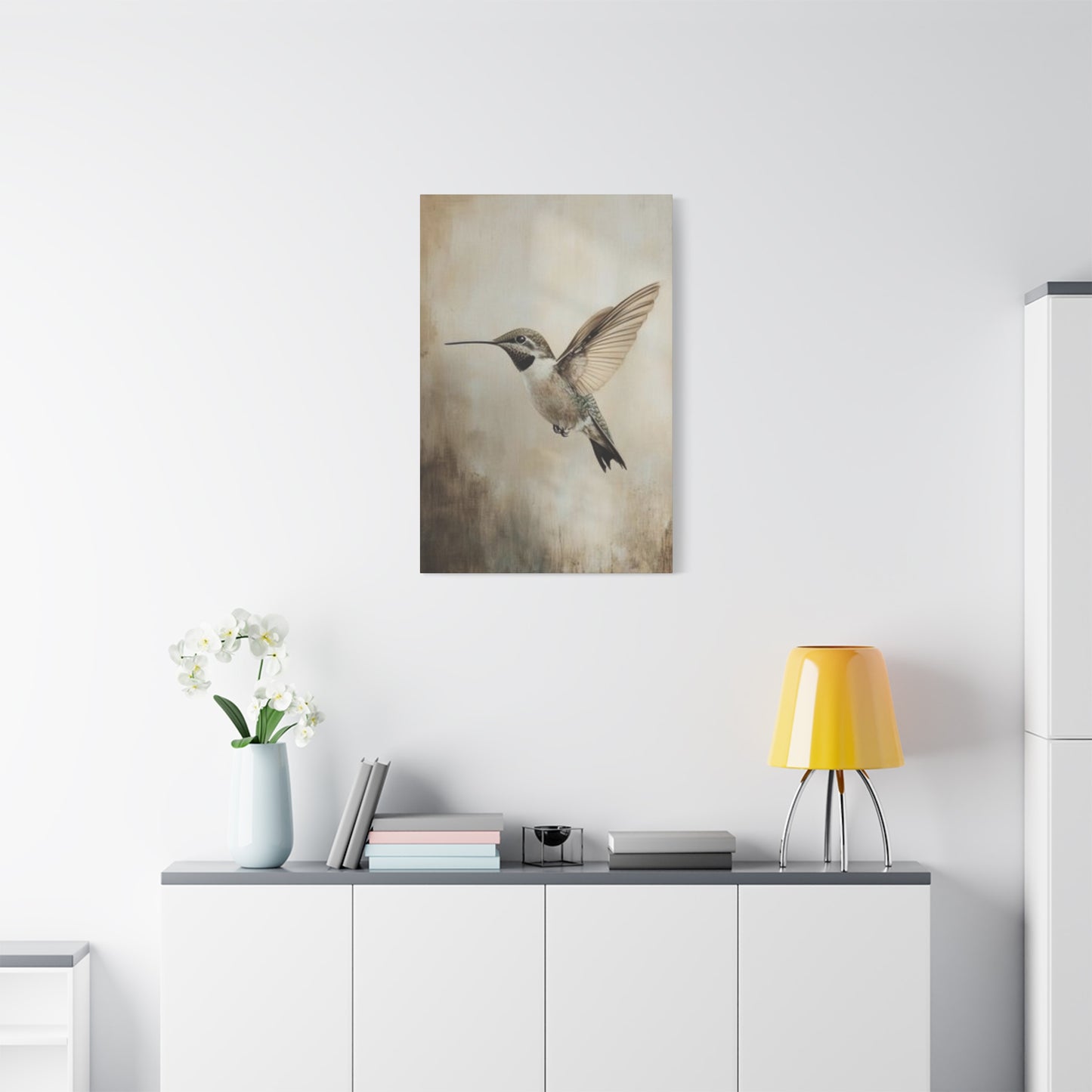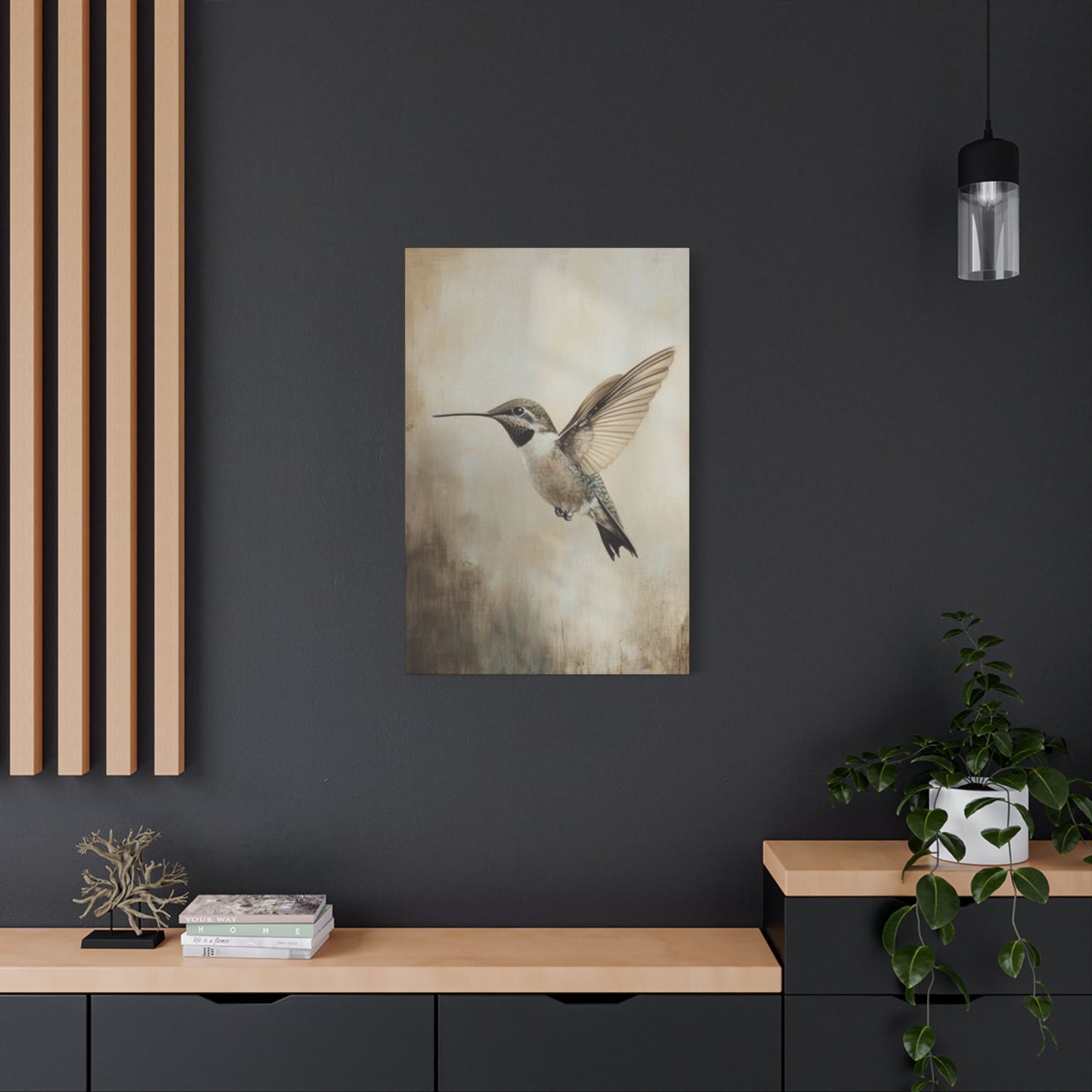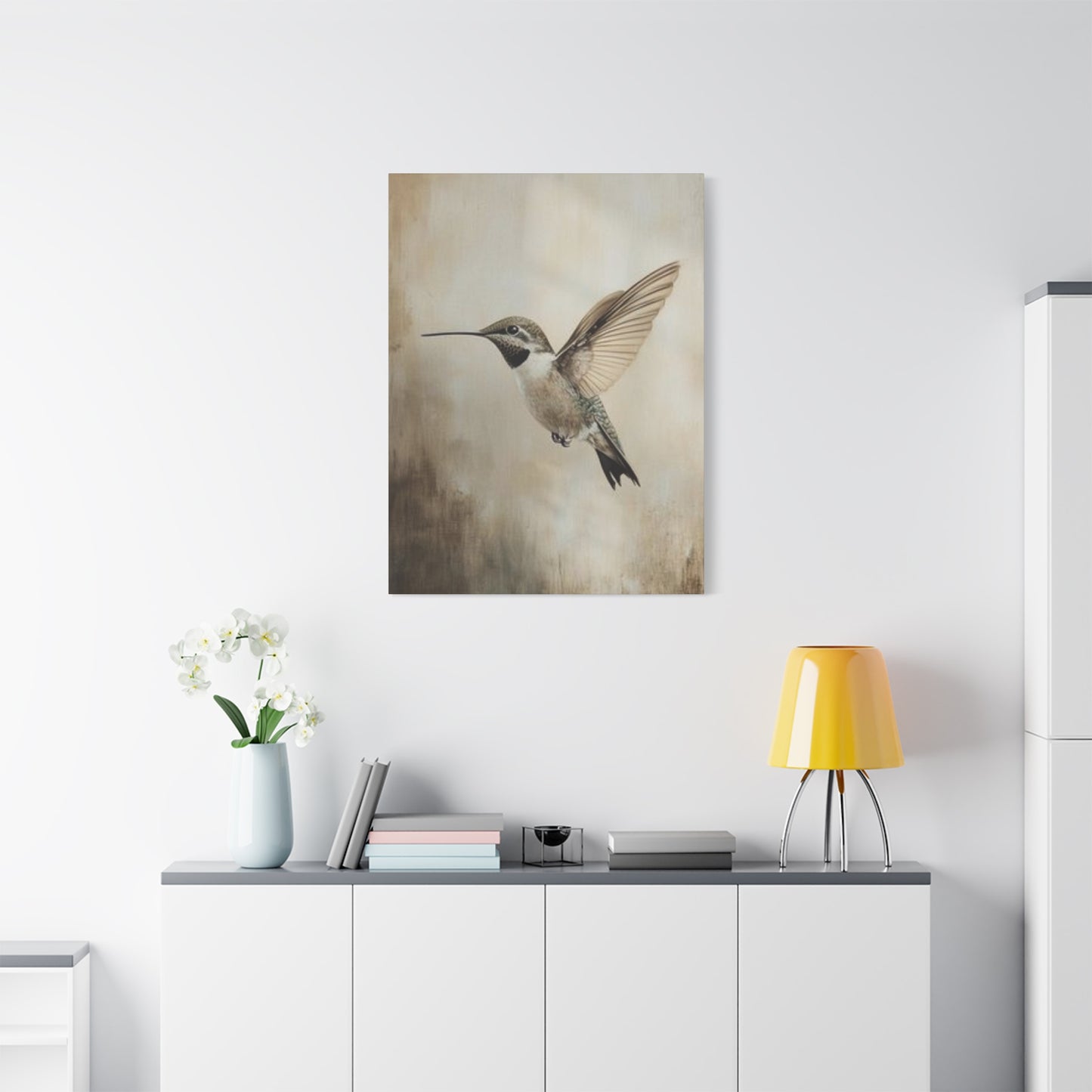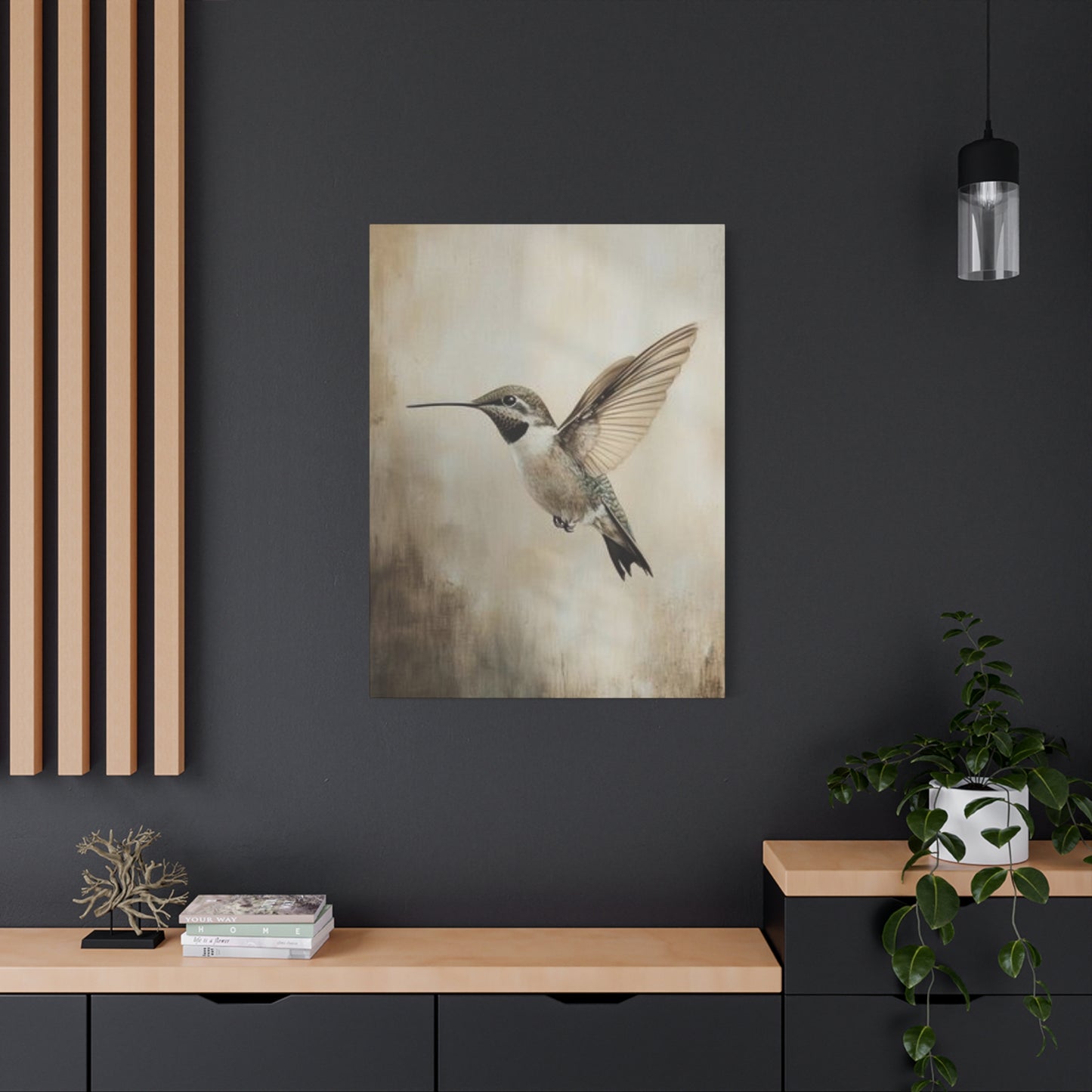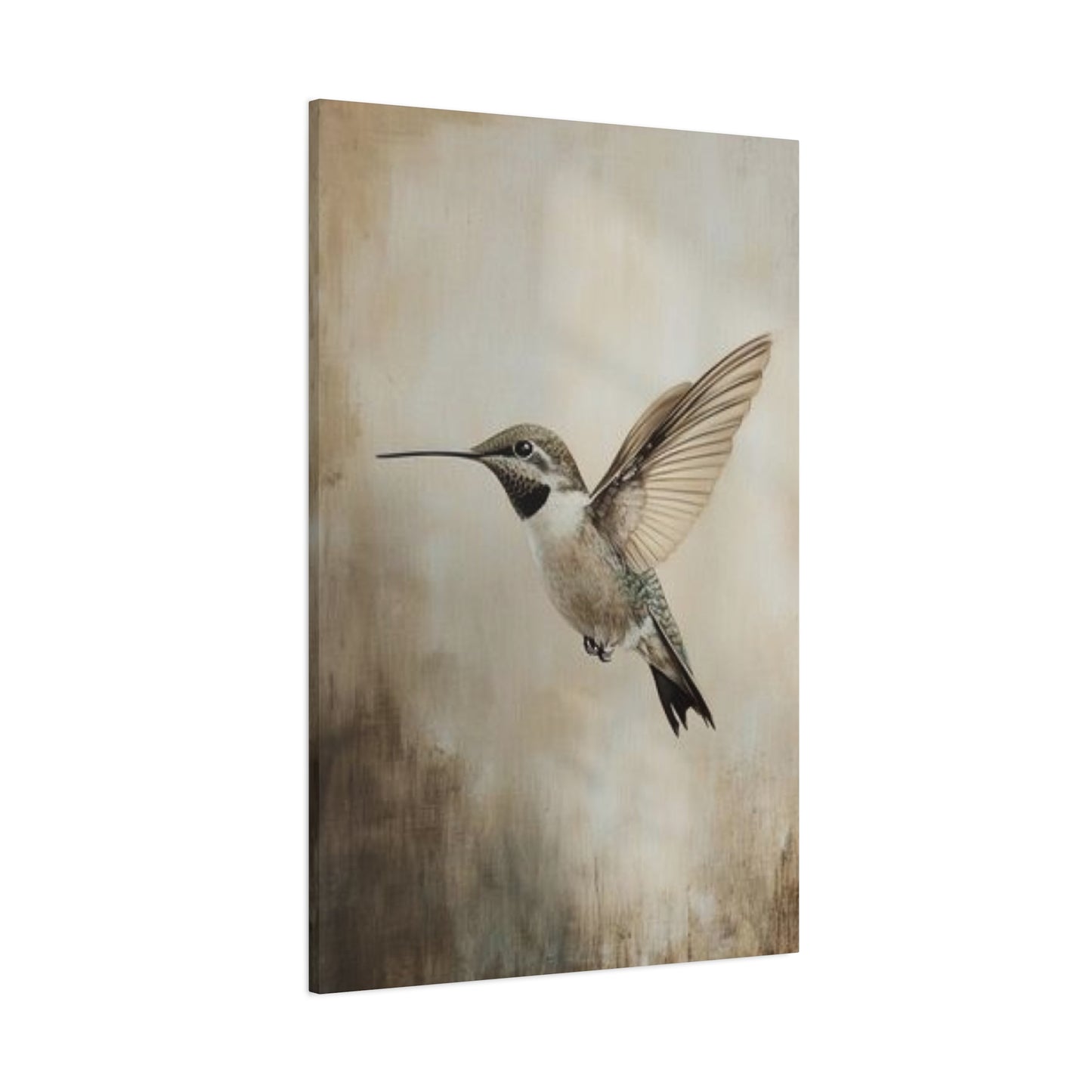Celebrate Life in Motion with Flying Hummingbird Painting Wall Art
The mesmerizing beauty of hummingbirds has captivated artists and nature enthusiasts for centuries. These tiny aerial acrobats, with their iridescent plumage and extraordinary flight capabilities, represent some of nature's most remarkable creatures. Flying hummingbird portrait painting wall art canvas prints have emerged as one of the most sought-after decorative elements for modern homes, offering a perfect blend of natural beauty, artistic excellence, and sophisticated design.
Canvas prints featuring these magnificent birds have revolutionized how we appreciate avian art in residential and commercial environments. The combination of high-quality printing technology and artistic mastery creates stunning visual experiences that transform ordinary rooms into galleries of natural wonder. These artworks serve not merely as decorative pieces but as windows into the fascinating world of hummingbirds, bringing their energy, grace, and vibrant colors into our daily lives.
The popularity of hummingbird canvas prints stems from their unique ability to capture motion in stillness. Artists specializing in these portraits understand the challenge of depicting creatures known for their constant movement. Through careful attention to detail, color gradation, and compositional balance, these artworks freeze moments of aerial ballet that would otherwise last mere seconds in nature.
Modern printing techniques have elevated hummingbird portrait paintings to unprecedented levels of quality and accessibility. Advanced canvas materials, archival inks, and sophisticated reproduction methods ensure that these artworks maintain their vibrancy and detail for decades. The result is museum-quality pieces that bring the wonder of these remarkable birds into homes around the world.
Artistic Excellence in Hummingbird Portraiture
The creation of exceptional hummingbird portrait paintings requires a deep understanding of both artistic technique and avian anatomy. Master artists who specialize in these subjects spend countless hours studying hummingbird behavior, flight patterns, and physical characteristics. This dedication to accuracy and beauty results in artworks that capture not just the appearance of these birds but their essence and spirit.
Contemporary hummingbird artists employ various techniques to achieve photorealistic results. Layering techniques allow for the subtle color transitions that make hummingbird feathers so distinctive. The iridescent quality of hummingbird plumage presents unique challenges for artists, requiring sophisticated understanding of light behavior and color theory. The most successful pieces demonstrate mastery over these complex visual elements.
Digital art has opened new possibilities for hummingbird portraiture. Artists can now manipulate colors, textures, and compositions with unprecedented precision. This technological advancement has democratized high-quality art production, making exceptional hummingbird portraits available to broader audiences through canvas print reproduction.
The artistic process typically begins with extensive reference gathering. Photographers and field researchers provide artists with detailed imagery of hummingbirds in various poses and lighting conditions. This reference material forms the foundation for artworks that achieve both scientific accuracy and artistic beauty.
Color selection plays a crucial role in successful hummingbird portraits. These birds display some of nature's most spectacular color combinations, from emerald greens and ruby reds to electric blues and golden ambers. Artists must understand how these colors interact and how they can be reproduced effectively in print form.
Composition considerations are equally important. The best hummingbird portraits create dynamic visual flow that guides the viewer's eye around the artwork. Whether depicting a single bird or multiple subjects, successful compositions balance movement, color, and negative areas to create compelling visual narratives.
Background selection significantly impacts the overall effectiveness of hummingbird portraits. Some artists prefer neutral backgrounds that allow the birds to dominate the composition, while others incorporate floral elements or natural environments that provide context and additional visual interest.
Canvas Print Technology and Quality
Modern canvas printing technology has revolutionized the reproduction of hummingbird portrait paintings. High-resolution digital printing allows for incredibly detailed reproductions that capture every feather, every color gradation, and every subtle detail of the original artwork. This technological advancement has made museum-quality art accessible to homeowners and collectors worldwide.
The canvas material itself plays a crucial role in the final quality of hummingbird prints. Premium cotton canvases provide excellent texture and durability, while synthetic alternatives offer different surface characteristics that can enhance certain artistic styles. The choice of canvas material affects color reproduction, longevity, and the overall aesthetic appeal of the finished piece.
Ink technology has evolved significantly in recent years, with pigment-based inks offering superior color accuracy and longevity compared to earlier dye-based alternatives. These advanced inks resist fading, maintain color vibrancy over time, and provide the color gamut necessary to accurately reproduce the brilliant hues of hummingbird plumage.
Printing resolution directly impacts the quality of fine details in hummingbird portraits. Modern printers capable of 1440 dpi or higher can reproduce the intricate feather patterns and subtle color variations that make these artworks so compelling. This level of detail ensures that viewers can appreciate the full beauty of the original artwork.
Color calibration throughout the printing process ensures accurate reproduction of the artist's original vision. Professional printing facilities employ sophisticated color management systems that maintain consistency between the digital file and the final printed product. This attention to detail is particularly important for hummingbird portraits, where accurate color reproduction is essential.
Stretching and mounting techniques affect both the appearance and longevity of canvas prints. Proper stretching ensures that the canvas remains taut and wrinkle-free over time, while appropriate mounting techniques protect the artwork from environmental factors that could cause deterioration.
Quality control measures throughout the printing process ensure that each canvas print meets high standards. This includes inspection of color accuracy, print quality, stretching uniformity, and overall presentation. Such attention to detail ensures that customers receive artworks worthy of display in their homes.
Hummingbird Species and Their Artistic Representation
North America hosts an impressive diversity of hummingbird species, each offering unique characteristics that inspire artists and delight viewers. The Ruby-throated Hummingbird, perhaps the most recognizable species, features prominently in many portrait paintings due to its distinctive red throat patch and widespread distribution across eastern North America.
Anna's Hummingbird, native to the western United States, presents artists with different color challenges. Males display brilliant magenta throats and crowns that create striking focal points in portrait compositions. The way light interacts with these iridescent feathers requires sophisticated artistic technique to reproduce accurately.
The Broad-tailed Hummingbird offers another popular subject for portrait artists. Found primarily in mountainous regions of the western United States, these birds display beautiful purple throats and distinctive tail shapes that create dynamic compositions. Their habitat preferences often lead to artworks that incorporate alpine floral elements.
Rufous Hummingbirds, known for their extensive migration patterns, display stunning orange and copper coloration that presents unique artistic opportunities. These warm tones create artworks that complement a wide range of home decorating schemes, from rustic to contemporary styles.
The Allen's Hummingbird, closely related to the Rufous, offers subtle variations in coloration and pattern that challenge artists to capture fine distinctions. These differences, while subtle, contribute to the scientific accuracy that elevates portrait paintings above mere decorative art.
Costa's Hummingbird presents artists with one of nature's most spectacular throat displays. The elongated purple gorget creates dramatic silhouettes that translate beautifully into portrait compositions. These distinctive features make Costa's Hummingbird portraits particularly striking as focal points in room design.
Black-chinned Hummingbirds, with their subtle purple throat bands, require artists to master understated elegance. These portraits often emphasize the birds' graceful proportions and delicate features rather than bold coloration, creating artworks that complement sophisticated decorating approaches.
Calliope Hummingbirds, North America's smallest birds, present unique compositional challenges. Artists must balance the birds' diminutive size with visual impact, often achieving this through careful background selection and emphasis on the birds' distinctive streaked throat patterns.
Color Theory in Hummingbird Art
The successful reproduction of hummingbird colors requires deep understanding of color theory and the physics of iridescence. Hummingbird feathers achieve their brilliant colors through microscopic structures that manipulate light rather than traditional pigmentation. This creates unique challenges for artists attempting to capture these effects in static artworks.
Iridescent colors change appearance based on viewing angle and lighting conditions. Artists must choose specific color combinations that suggest this dynamic quality while working within the limitations of static media. This often involves subtle gradations and strategic color placement that creates the illusion of shifting hues.
Color temperature plays a crucial role in hummingbird portraits. Warm lighting emphasizes red and orange tones, while cool lighting enhances blues and greens. Successful artists understand how to balance these temperature variations to create cohesive compositions that feel natural and appealing.
Complementary color relationships create visual excitement in hummingbird portraits. The natural color combinations found in these birds often demonstrate perfect complementary relationships, such as the red and green combinations common in many species. Artists can enhance these relationships through careful background and compositional choices.
Saturation levels require careful consideration in hummingbird art. While these birds display incredibly saturated colors in nature, reproducing maximum saturation in artwork can appear artificial or overwhelming. Skilled artists balance high saturation areas with more subdued regions to create visually comfortable compositions.
Color harmony throughout the composition ensures that hummingbird portraits feel cohesive rather than chaotic. This involves coordinating the bird's natural colors with background elements and any additional compositional features. Successful harmony creates artworks that feel balanced and professionally executed.
The psychological effects of different colors influence how viewers respond to hummingbird portraits. Red tones create energy and excitement, while green tones promote calm and natural feelings. Blue tones suggest tranquility and peace. Artists can manipulate these psychological responses through strategic color choices.
Composition Techniques for Dynamic Hummingbird Portraits
Effective composition transforms hummingbird portraits from simple bird illustrations into dynamic artworks that capture the energy and movement these creatures embody. The most successful compositions guide the viewer's eye through the artwork while maintaining focus on the primary subject.
The rule of thirds applies effectively to hummingbird portraits, with the bird positioned at intersection points rather than centered in the composition. This creates more dynamic arrangements that feel natural and engaging. However, skilled artists know when to break this rule for specific artistic effects.
Diagonal compositions create a sense of movement that complements hummingbirds' active nature. Positioning the bird along diagonal lines or incorporating diagonal background elements reinforces the dynamic quality these birds represent. This technique is particularly effective for flight poses.
Leading lines direct viewer attention to key elements within the composition. In hummingbird portraits, these might include flower stems, branch structures, or environmental features that guide the eye toward the bird. Effective leading lines create visual flow that enhances the overall impact of the artwork.
Negative areas, or empty portions of the composition, provide visual rest and emphasis opportunities. Skillful use of negative areas prevents compositions from feeling cluttered while allowing the hummingbird to dominate the visual hierarchy. This balance is crucial for creating professional-quality artworks.
Scale relationships within the composition affect emotional impact. Larger bird representations create intimate, detailed studies, while smaller representations within expansive compositions suggest the birds' relationship to their environment. Both approaches can be effective depending on the artist's intent.
Depth creation through overlapping elements, atmospheric perspective, and size variation adds three-dimensional quality to hummingbird portraits. This depth helps viewers connect emotionally with the artwork by creating a sense of presence and realism.
Multiple bird compositions require careful attention to individual positioning and interaction. Each bird should maintain its individual identity while contributing to the overall compositional harmony. This balance challenges artists to create complex yet coherent visual narratives.
Print Finishing Options and Presentation
The presentation of hummingbird canvas prints significantly impacts their effectiveness as decorative elements. Various finishing options allow customization to match specific decorating requirements and personal preferences. Understanding these options helps buyers select pieces that integrate perfectly into their intended environments.
Gallery wrap finishing creates clean, contemporary presentations that work well in modern settings. The canvas extends around the stretcher frame sides, eliminating the need for traditional frames while creating seamless presentations. This finishing style emphasizes the artwork itself rather than decorative framing elements.
Traditional framing options provide more formal presentations suitable for traditional or transitional decorating styles. Frame selection affects the overall appearance and can enhance or detract from the artwork's impact. Professional framing consultation ensures optimal results for valuable pieces.
Floating frame presentations create the illusion that the canvas is suspended within the frame, adding depth and visual interest. This modern approach works particularly well with hummingbird portraits by suggesting the birds' ability to hover and fly freely.
Matting options provide additional customization possibilities for framed presentations. Acid-free matting materials protect the artwork while creating visual breathing room around the image. Mat colors can be selected to complement the artwork or coordinate with room color schemes.
Protective coatings extend the life of canvas prints while maintaining their appearance. UV-resistant coatings prevent color fading from sunlight exposure, while moisture-resistant treatments protect against humidity damage. These protective measures are particularly important for artworks displayed in challenging environments.
Size options affect both visual impact and placement flexibility. Larger prints create dramatic focal points suitable for prominent wall locations, while smaller pieces work well in groupings or intimate settings. Understanding scale relationships helps buyers select appropriate sizes for their applications.
Multiple piece presentations allow for creative arrangements that can span large wall areas or create visual storytelling opportunities. Diptych and triptych presentations divide single images across multiple canvases, while series presentations showcase multiple related images in coordinated arrangements.
Custom sizing options accommodate specific architectural requirements or design preferences. Many printing services offer custom dimensions that ensure perfect fits for challenging locations or unique design concepts. This flexibility makes hummingbird canvas prints suitable for virtually any application.
Color Schemes and Home Decorating Integration
Integrating hummingbird canvas prints into existing decorating schemes requires understanding color relationships and design principles. The natural colors present in these artworks offer tremendous versatility but require thoughtful coordination with surrounding elements.
Neutral color schemes provide excellent backdrops for vibrant hummingbird portraits. Gray, beige, and white color palettes allow the artwork's natural colors to dominate while creating sophisticated, uncluttered presentations. This approach works particularly well in contemporary and minimalist settings.
Earth tone color schemes complement the natural subject matter of hummingbird portraits. Brown, tan, and muted green color palettes create harmonious relationships that feel organic and comfortable. This approach works well in rustic, traditional, and nature-inspired decorating styles.
Bold color schemes can either complement or compete with hummingbird portraits, depending on color selection and implementation. Successful bold schemes coordinate with colors present in the artwork while maintaining overall visual balance. This requires careful planning and professional color consultation.
Monochromatic color schemes use variations of single colors to create sophisticated, cohesive appearances. When properly executed with hummingbird portraits, monochromatic schemes can create dramatic presentations that emphasize the artwork while maintaining decorating unity.
Analogous color schemes use colors adjacent on the color wheel to create harmonious presentations. Many hummingbird portraits naturally incorporate analogous color relationships, making them easy to coordinate with similarly-based decorating schemes.
Complementary color schemes use opposite colors on the color wheel to create high-impact presentations. The natural red and green combinations found in many hummingbird species work perfectly with complementary decorating approaches, creating vibrant yet balanced environments.
Seasonal color adaptations allow hummingbird portraits to coordinate with changing decorating themes throughout the year. The natural colors in these artworks can be emphasized or de-emphasized through surrounding color selections, creating versatile decorating solutions.
Room-Specific Applications and Design Considerations
Different rooms present unique opportunities and challenges for hummingbird canvas print display. Understanding these room-specific considerations ensures optimal placement and maximum visual impact while respecting the functional requirements of each location.
Living room applications often benefit from larger hummingbird portraits that can serve as focal points above seating areas or fireplace mantels. The social nature of living rooms makes them ideal locations for conversation-starting artworks that reflect personal interests and aesthetic preferences.
Bedroom applications should consider the calming qualities of hummingbird imagery while ensuring that colors coordinate with restful environments. Softer, more muted hummingbird portraits often work better in bedrooms than high-energy, vibrant presentations that might interfere with relaxation.
Kitchen applications can benefit from smaller hummingbird prints that add natural beauty without overwhelming functional areas. The connection between hummingbirds and flowers makes these artworks particularly appropriate for kitchens, where natural themes often predominate.
Dining room applications allow for more formal presentations that complement entertaining environments. Hummingbird portraits can create conversation topics while adding natural beauty that enhances dining experiences. Size and formality should match the room's decorating style.
Bathroom applications require special consideration for humidity and moisture exposure. Properly sealed canvas prints can work well in bathrooms, but ventilation and protective measures should be considered to ensure longevity.
Home office applications can benefit from the inspiring qualities of hummingbird imagery. These artworks can provide visual relief from work-related stress while creating environments that promote creativity and positive thinking.
Hallway applications often work well with series or multiple piece presentations that create visual interest along long wall areas. Hummingbird portraits can transform transitional areas into gallery-like experiences that connect different parts of the home.
Children's room applications should consider age-appropriate sizing and themes while ensuring that artworks can grow with changing preferences. Hummingbird portraits can inspire interest in nature and science while providing beautiful decorative elements.
Seasonal Decorating with Hummingbird Art
Hummingbird canvas prints offer unique opportunities for seasonal decorating that celebrate the natural rhythms these birds represent. Understanding seasonal migration patterns and behavioral changes allows decorating schemes that reflect the natural world throughout the year.
Spring decorating themes naturally incorporate hummingbird imagery as these birds return from winter migrations. Fresh, vibrant colors and themes of renewal make this season perfect for introducing new hummingbird artworks or refreshing existing displays with spring-inspired accessories.
Summer decorating emphasizes the peak activity period for hummingbirds, when these birds are most visible and active. Bold, energetic presentations work well during this season, with emphasis on feeding behaviors and garden relationships that characterize summer hummingbird activity.
Fall decorating can incorporate hummingbird imagery that reflects migration themes and preparation for seasonal changes. Warmer color palettes and themes of journey and transition make this season appropriate for more contemplative hummingbird presentations.
Winter decorating might de-emphasize hummingbird imagery in areas where these birds migrate, or celebrate year-round species in warmer climates. This season offers opportunities for more subdued presentations that maintain natural themes without conflicting with seasonal realities.
Holiday decorating can incorporate hummingbird themes in creative ways that celebrate both seasonal traditions and natural beauty. The jewel-like colors of many hummingbird species coordinate beautifully with traditional holiday color schemes.
Transitional decorating between seasons allows for gradual changes that maintain visual interest while respecting seasonal rhythms. Hummingbird portraits provide consistent natural themes that can be emphasized or de-emphasized through accessory changes.
Weather-responsive decorating acknowledges that indoor environments can reflect outdoor conditions and seasonal moods. Hummingbird artworks can provide consistent natural beauty that brightens environments during challenging weather periods.
Maintenance and Care for Canvas Prints
Proper maintenance ensures that hummingbird canvas prints maintain their beauty and value over many years. Understanding care requirements and implementing appropriate maintenance routines protects these investments while preserving their decorative impact.
Dust accumulation represents the most common maintenance challenge for canvas prints. Regular dusting with soft, dry cloths removes surface debris without damaging the canvas or inks. Avoiding harsh chemicals or excessive moisture prevents damage to both the canvas material and printed imagery.
Lighting protection prevents color fading and extends the life of hummingbird canvas prints. Avoiding direct sunlight and using UV-filtering window treatments protects against the most common cause of artwork deterioration. LED lighting systems produce minimal UV radiation and provide excellent illumination for artwork display.
Temperature and humidity control protects canvas prints from environmental damage. Extreme temperature variations can cause canvas expansion and contraction that leads to stretching problems, while excessive humidity can promote mold growth or canvas deterioration.
Cleaning procedures should be minimal and gentle to avoid damage. Spot cleaning with barely damp cloths can address specific soiling, but extensive cleaning should be left to professional art restoration services. Prevention through proper placement and environmental control is preferable to corrective cleaning.
Handling precautions prevent damage during moving or repositioning. Canvas prints should be lifted by their frames rather than the canvas itself, and protective coverings should be used during transport or storage. Proper handling techniques prevent tears, dents, or other physical damage.
Storage considerations apply when artworks must be temporarily stored. Climate-controlled environments protect against temperature and humidity extremes, while protective wrapping prevents physical damage and dust accumulation. Vertical storage prevents warping and stretching problems.
Professional maintenance services can address problems that exceed normal homeowner capabilities. Art restoration specialists can repair damage, refresh protective coatings, and provide expert advice about preservation techniques. Establishing relationships with qualified professionals provides resources for valuable artworks.
Insurance considerations protect valuable canvas print investments. Documentation through photography and purchase records establishes values for insurance purposes, while appropriate coverage levels ensure replacement capabilities if damage or loss occurs.
Artistic Styles and Interpretation Approaches
Hummingbird portrait paintings encompass various artistic styles that appeal to different aesthetic preferences and decorating approaches. Understanding these stylistic variations helps buyers select artworks that match their personal tastes and decorating requirements.
Photorealistic styles emphasize accurate representation of hummingbird appearance and behavior. These artworks require exceptional technical skill and attention to detail, resulting in pieces that function almost as nature photography. Photorealistic hummingbird portraits work well in settings where accuracy and scientific interest are priorities.
Impressionistic styles capture the essence and energy of hummingbirds through loose brushwork and emphasis on color and light effects. These artworks often convey more emotional impact than photorealistic approaches, creating pieces that emphasize feeling over precise detail.
Abstract interpretations reduce hummingbird forms to essential elements while maintaining recognizable characteristics. These stylized approaches work well in contemporary settings where decorating schemes emphasize simplified forms and bold color relationships.
Traditional wildlife art styles follow established conventions for depicting birds and natural subjects. These approaches often incorporate realistic rendering with compositional arrangements that emphasize the birds' natural behaviors and habitat relationships.
Contemporary styles blend traditional wildlife art with modern artistic sensibilities. These hybrid approaches might incorporate unusual color palettes, simplified forms, or innovative compositional arrangements that create fresh interpretations of familiar subjects.
Decorative styles prioritize aesthetic appeal over scientific accuracy. These artworks might incorporate stylized forms, enhanced colors, or fantastical elements that create purely decorative presentations suitable for specific design applications.
Cultural interpretations incorporate artistic traditions from different cultures and artistic movements. These approaches might reflect Native American traditions, Asian artistic principles, or European artistic styles applied to hummingbird subjects.
Mixed media approaches combine traditional painting techniques with other artistic media to create unique presentations. These might incorporate collage elements, metallic accents, or textural additions that enhance the visual impact of hummingbird portraits.
Canvas Material Selection and Quality Factors
The foundation of any quality hummingbird canvas print lies in the canvas material selection. Different canvas types offer varying characteristics that affect appearance, durability, and long-term performance of the finished artwork.
Cotton canvas represents the traditional choice for fine art reproduction, offering excellent texture and archival quality when properly manufactured. High-grade cotton canvases provide smooth, consistent surfaces that reproduce fine details accurately while maintaining the tactile qualities that make canvas prints appealing.
Synthetic canvas materials offer different performance characteristics that may be preferable for specific applications. Polyester canvases often provide superior dimensional stability and resistance to environmental factors, making them suitable for challenging display conditions.
Canvas weight affects both durability and appearance characteristics. Heavier canvases provide more substantial feel and better stretching properties, while lighter canvases may be more suitable for large prints where weight considerations are important.
Texture variations create different visual effects that can enhance specific types of hummingbird portraits. Smooth textures work well for detailed photorealistic images, while more pronounced textures might enhance impressionistic or painterly styles.
Priming quality affects ink absorption and color reproduction. High-quality priming creates uniform surfaces that ensure consistent color saturation and prevent ink bleeding or feathering that can compromise image quality.
Archival properties determine long-term stability and value retention. Acid-free materials and stable manufacturing processes ensure that canvas prints maintain their appearance and structural integrity over decades rather than years.
Manufacturing standards vary significantly between suppliers, affecting quality, consistency, and performance. Understanding these variations helps buyers make informed decisions about canvas print purchases and ensures satisfactory long-term performance.
Environmental resistance characteristics determine suitability for different display conditions. Some canvas materials offer superior resistance to humidity, temperature variations, or other environmental challenges that might affect standard materials.
Digital Art Creation and Enhancement Techniques
Modern hummingbird portrait creation often involves sophisticated digital art techniques that enhance traditional artistic approaches. Understanding these technologies helps appreciate the quality and capabilities of contemporary canvas print production.
Digital painting software allows artists to create original hummingbird portraits entirely within digital environments. These tools offer unprecedented control over color, texture, and detail while providing editing capabilities that enhance artistic possibilities.
Photo manipulation techniques can enhance or modify photographic source material to create artistic interpretations. These approaches might involve color enhancement, background replacement, or compositional modifications that improve artistic impact.
Hybrid techniques combine traditional painting methods with digital enhancement to create unique artistic presentations. Artists might begin with traditional media and use digital tools to refine details, adjust colors, or create variations.
Layer-based editing allows complex artistic effects that would be difficult or impossible with traditional techniques. Artists can manipulate individual elements independently while maintaining overall compositional control.
Color correction and enhancement capabilities ensure optimal reproduction quality. Digital tools can adjust colors specifically for printing processes, ensuring that final canvas prints accurately represent the artist's intended vision.
Resolution optimization ensures that digital artworks reproduce effectively at various sizes. Proper resolution management allows single artworks to be printed successfully from small accent pieces to large statement presentations.
File format considerations affect quality and compatibility throughout the production process. Understanding optimal formats ensures that artistic intent is preserved through all stages of reproduction and printing.
Quality assurance through digital proofing allows artists and printers to verify results before final production. This capability ensures that canvas prints meet quality expectations and accurately represent original artworks.
Environmental Impact and Sustainability Considerations
Contemporary canvas print production increasingly considers environmental impact and sustainability factors. Understanding these considerations helps buyers make responsible choices while supporting environmentally conscious practices.
Sustainable canvas materials include organic cotton, recycled synthetic fibers, and other environmentally responsible alternatives. These materials offer comparable performance to traditional options while reducing environmental impact.
Eco-friendly ink formulations eliminate or reduce toxic solvents and heavy metals while maintaining color quality and longevity. Water-based inks and vegetable-based formulations offer environmentally responsible alternatives to traditional printing inks.
Energy-efficient printing processes reduce the carbon footprint of canvas print production. Modern printing equipment often incorporates energy-saving technologies that maintain quality while minimizing environmental impact.
Waste reduction practices throughout the production process minimize environmental impact while often reducing costs. These practices might include optimized printing layouts, material recycling programs, and packaging reduction initiatives.
Local production and sourcing reduces transportation impacts while supporting local economies. Choosing locally produced canvas prints can significantly reduce the environmental impact associated with shipping and distribution.
Packaging considerations affect environmental impact through material selection and design efficiency. Minimal, recyclable packaging options reduce waste while providing adequate protection for shipped artworks.
End-of-life considerations address what happens to canvas prints when they reach the end of their useful lives. Recyclable materials and biodegradable components reduce long-term environmental impact.
Certification programs help consumers identify environmentally responsible canvas print producers. Various certification systems verify sustainable practices and environmental responsibility throughout the production process.
Investment Value and Collectibility Factors
Hummingbird canvas prints can represent significant investments that may appreciate in value over time. Understanding factors that affect investment potential helps buyers make informed decisions about purchases and collection development.
Artist reputation significantly affects both current value and appreciation potential. Established artists with recognition in wildlife art communities typically command higher prices and show better appreciation trends than unknown artists.
Limited edition status creates scarcity that can drive value appreciation. Numbered, limited editions often show better investment performance than open editions, particularly when edition sizes are small and demand is strong.
Print quality directly affects both current value and long-term appreciation potential. Museum-quality reproduction techniques and materials command premium prices and tend to maintain value better than standard production methods.
Condition maintenance is crucial for preserving and enhancing investment value. Proper care, professional framing, and appropriate display conditions protect artworks while maintaining their investment potential.
Market trends in wildlife art affect the investment potential of hummingbird prints. Understanding these trends helps collectors make strategic purchasing decisions and optimize their collection development.
Documentation and provenance establish authenticity and value. Certificates of authenticity, artist signatures, and purchase documentation support value claims and enhance resale potential.
Insurance considerations protect investment value while providing peace of mind. Appropriate coverage levels and documentation requirements ensure that valuable artworks are adequately protected against loss or damage.
Storage and preservation requirements protect investment value during periods when artworks are not displayed. Professional storage solutions maintain condition while preserving investment potential.
Technological Advances in Canvas Printing
Rapid technological advancement continues to improve the quality, durability, and cost-effectiveness of canvas print production. Understanding these developments helps consumers appreciate current capabilities and anticipate future improvements.
Printing resolution has increased dramatically, with modern equipment capable of reproducing extremely fine details that rival traditional photographic processes. This capability is particularly important for hummingbird portraits, where feather details and color gradations are crucial.
Color gamut expansion allows reproduction of broader color ranges that more accurately represent original artworks. This advancement is especially significant for hummingbird portraits, where natural iridescent colors present unique reproduction challenges.
Ink longevity has improved through advanced formulations that resist fading, color shifting, and environmental damage. Modern pigment-based inks often carry century-long stability guarantees under normal display conditions.
Substrate development has produced canvas materials with superior performance characteristics. New materials offer improved dimensional stability, better ink adhesion, and enhanced durability while maintaining traditional aesthetic qualities.
Print speed improvements have reduced production times and costs while maintaining quality standards. Faster production allows for more competitive pricing and shorter delivery times for custom orders.
Color management systems ensure consistency throughout the production process. Advanced calibration and profiling systems maintain color accuracy from digital file to finished print, ensuring predictable results.
Quality control automation reduces human error and improves consistency. Automated inspection systems can detect defects and variations that might be missed by human inspectors, ensuring higher quality standards.
Environmental monitoring and control systems optimize production conditions for consistent results. Temperature, humidity, and other environmental factors are precisely controlled to ensure optimal printing conditions.
Custom Commissioning and Personalization Options
Many canvas print services offer custom commissioning and personalization options that allow buyers to create unique hummingbird artworks tailored to specific requirements and preferences. Understanding these options helps buyers create truly personalized decorative elements.
Custom sizing accommodates specific architectural requirements and design preferences. Non-standard dimensions ensure perfect fits for challenging locations while maintaining proper proportional relationships within the artwork.
Color customization allows modification of existing artworks to coordinate with specific decorating schemes. Professional color adjustment can enhance or modify colors while maintaining artistic integrity and natural appearance.
Compositional modifications can adapt existing artworks to different applications or preferences. Background changes, element additions or removals, and other compositional adjustments create personalized versions of standard artworks.
Multiple format options allow single artworks to be adapted for different presentation requirements. Panoramic formats, square presentations, and other aspect ratio modifications create versatility for various applications.
Text additions can incorporate personal messages, family names, or other custom text elements into artwork compositions. These additions must be carefully integrated to maintain artistic quality while achieving personalization goals.
Combination services can incorporate multiple images or elements into single compositions. Family favorite photographs might be combined with professional hummingbird portraits to create unique, personalized artworks.
Series development allows creation of coordinated multiple-piece presentations that tell visual stories or provide extended impact across large wall areas. These series might follow themes, color progressions, or narrative structures.
Consultation services help buyers develop personalization concepts that achieve their goals while maintaining artistic quality. Professional guidance ensures that customization enhances rather than compromises the final artwork.
Professional Display and Gallery Techniques
Professional display techniques can significantly enhance the impact and perceived value of hummingbird canvas prints. Understanding these techniques allows homeowners to create gallery-quality presentations in their own environments.
Lighting design plays a crucial role in artwork presentation. Professional lighting systems highlight artwork while minimizing damage from UV radiation. Track lighting, picture lights, and accent lighting systems all offer different advantages for various applications.
Wall preparation affects both appearance and longevity of artwork presentations. Proper wall surface preparation, including priming and texturing considerations, creates optimal backgrounds for artwork display while providing adequate support.
Height and positioning guidelines ensure optimal viewing angles and visual impact. Professional standards for artwork height relative to furniture and human scale create comfortable, effective presentations that maximize aesthetic appeal.
Grouping and arrangement techniques create cohesive presentations when multiple artworks are displayed together. Professional approaches to spacing, alignment, and relationship development create gallery-quality multiple-piece presentations.
Matting and framing techniques enhance artwork presentation while providing protection. Professional framing approaches balance aesthetic enhancement with conservation requirements to create presentations that are both beautiful and preserving.
Background color selection affects artwork presentation by providing contrast, harmony, or specific aesthetic effects. Understanding color relationships helps create backgrounds that enhance rather than compete with hummingbird portraits.
Environmental control protects artworks while optimizing presentation conditions. Temperature, humidity, and lighting control systems create optimal display environments that preserve artworks while enhancing their appearance.
Security considerations protect valuable artworks from theft or damage. Professional security systems and installation techniques provide protection while maintaining aesthetic appeal and accessibility.
Market Trends and Future Developments
The market for hummingbird canvas prints continues to evolve, driven by technological advancement, changing consumer preferences, and broader trends in home decorating and art collection. Understanding these trends helps predict future developments and opportunities.
Digital art platforms have democratized access to high-quality hummingbird artwork while creating new opportunities for artists and consumers. Online marketplaces allow direct artist-to-consumer sales that bypass traditional gallery systems while providing global reach.
Customization demand continues to grow as consumers seek unique, personalized decorative elements. This trend drives development of new customization technologies and services that allow individual expression while maintaining professional quality standards.
Sustainability consciousness increasingly influences purchasing decisions, driving demand for environmentally responsible production methods and materials. This trend encourages innovation in sustainable canvas materials, eco-friendly inks, and reduced-impact production processes.
Technology integration in artwork presentation includes features like QR codes linking to artist information, augmented reality experiences, and interactive elements that enhance traditional static presentations with digital enhancements.
Size trend variations reflect changing home architecture and decorating preferences. Larger homes often accommodate oversized artworks, while smaller living situations drive demand for compact presentations and multiple-piece arrangements.
Price point diversification creates opportunities for various market segments. High-end collectors demand museum-quality limited editions, while mainstream consumers seek attractive, affordable options that provide excellent value and aesthetic appeal.
Style evolution reflects broader cultural trends and artistic movements. Contemporary hummingbird art increasingly incorporates modern design sensibilities while maintaining connection to natural subjects and traditional wildlife art foundations.
Global market expansion creates opportunities for international artists and styles while exposing consumers to diverse artistic approaches and cultural interpretations of hummingbird subjects.
Conclusion
Flying hummingbird portrait painting wall art canvas prints represent a remarkable fusion of natural beauty, artistic excellence, and technological advancement. These artworks bring the wonder and energy of nature's most extraordinary birds into our homes, creating focal points that inspire, delight, and enhance our daily environments.
The evolution of canvas printing technology has democratized access to museum-quality art while maintaining the highest standards of reproduction accuracy and longevity. Modern printing techniques can capture every detail of hummingbird plumage, every subtle color transition, and every stroke of the artist’s brush with stunning clarity. This ensures that each canvas not only decorates a wall but also tells a story — of motion, freedom, and the fleeting magic of life in flight.
Whether you're a seasoned art collector, a nature enthusiast, or simply someone looking to add beauty and meaning to your living space, flying hummingbird wall art offers something uniquely powerful. It’s more than decor — it’s a visual celebration of life’s vibrancy, a reminder to find joy in the little things, and a timeless connection to the natural world.

















